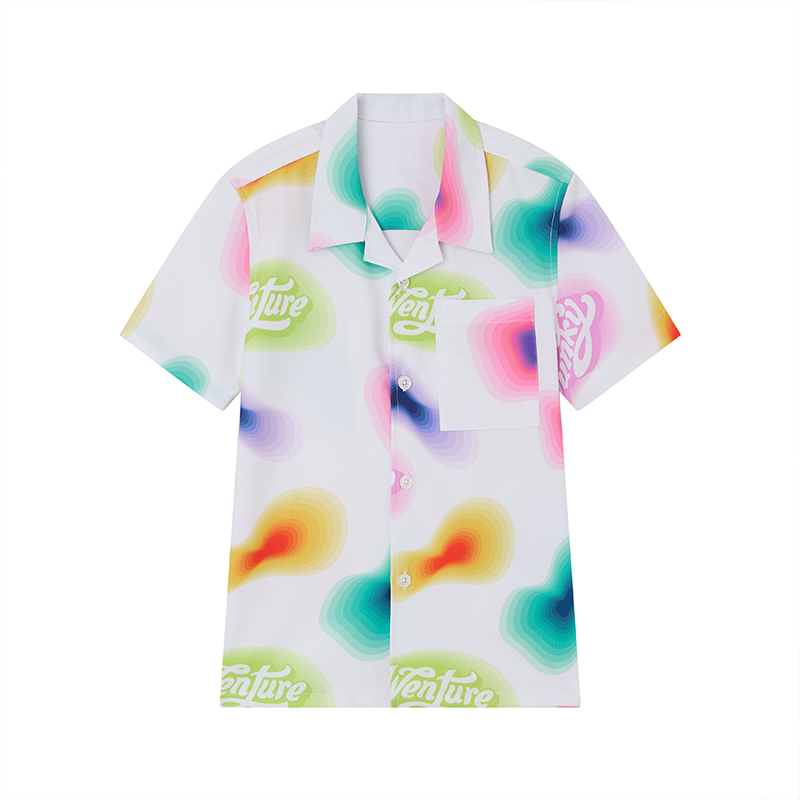Sep. 13, 2024
When it comes to iconic summer fashion, few garments are as easily recognizable as the Hawaiian shirt. Often brightly colored and adorned with tropical patterns, these shirts evoke images of sandy beaches, swaying palm trees, and endless sunshine. However, you might have also come across the term “Aloha shirt” when referring to the same type of clothing. This raises an interesting question: Is there a difference between a Hawaiian shirt and an Aloha shirt?
In short, while the two terms are often used interchangeably, subtle distinctions exist in their origin, cultural significance, and even modern-day usage.

The Aloha shirt has deep roots in the Hawaiian Islands, where it originated in the early 20th century. The first Aloha shirts were made in the 1930s, using materials like Japanese kimono fabric, and featured tropical motifs such as hibiscus flowers, birds, and palm trees. These shirts were initially designed for the locals and were tailored to fit the warm, tropical climate of Hawaii. They were light, comfortable, and embodied the spirit of the islands.
The term "Aloha shirt" reflects the cultural significance behind the garment. "Aloha" in Hawaiian means "love," "peace," or "compassion." When wearing an Aloha shirt, the intention is to embody these values—it's more than just a piece of clothing; it’s a symbol of the Hawaiian way of life. Over time, the Aloha shirt became a representation of Hawaiian culture and was embraced by both locals and visitors to the islands.
The term "Hawaiian shirt," on the other hand, is often used more broadly to refer to any shirt with tropical patterns, regardless of its authenticity or connection to Hawaiian culture. While the Aloha shirt is rooted in Hawaiian tradition and cultural significance, the Hawaiian shirt has become a global fashion staple, particularly among tourists.
Hawaiian shirts are often mass-produced in various countries and don’t necessarily have the same cultural undertones as the Aloha shirt. Tourists frequently purchase these shirts as souvenirs, and they are worn more as fun, casual attire rather than as an expression of Hawaiian values.
While both shirts share a similar design ethos—short sleeves, open collars, and bright colors—the patterns and motifs can differ. Aloha shirts tend to feature more traditional, culturally significant motifs such as native Hawaiian plants, marine life, and historical symbols. The colors may be vivid, but the designs are often more subtle and harmonious, representing the natural beauty of Hawaii.
Hawaiian shirts, particularly those mass-produced for tourists, can have a more exaggerated or cartoonish look. These shirts may include louder, more extravagant designs, like bold palm trees, surfboards, or sunsets, which appeal to tourists looking for a fun, carefree outfit for vacations.
In modern times, the Aloha shirt has taken on a new role in Hawaiian culture and beyond. It’s become common office attire in Hawaii, particularly on “Aloha Fridays,” which is similar to “Casual Fridays” in other parts of the world. Wearing an Aloha shirt to the office is considered a way to embrace both professionalism and the relaxed Hawaiian lifestyle.
Globally, the Hawaiian shirt has become a fun, casual wardrobe option, often seen at beach parties or tropical-themed events. Celebrities and fashion designers have also embraced this style, incorporating Hawaiian shirt designs into mainstream fashion, sometimes blurring the lines between the traditional Aloha shirt and the more commercial Hawaiian shirt.
In essence, while the terms Hawaiian shirt and Aloha shirt are often used interchangeably, there are subtle differences between the two. The Aloha shirt carries cultural significance, rooted in Hawaiian tradition, and is often more subdued in its design. Meanwhile, the Hawaiian shirt has become a global fashion staple, known for its bold, tropical patterns and casual appeal.
Whether you’re looking for a garment that symbolizes the rich culture of Hawaii or simply a fun shirt to wear on vacation, understanding the difference between these two can help you choose the right piece for your wardrobe.
Related articles:Previous: None
Next: None
Related Articles
If you are interested in sending in a Guest Blogger Submission,welcome to write for us!
All Comments ( 0 )